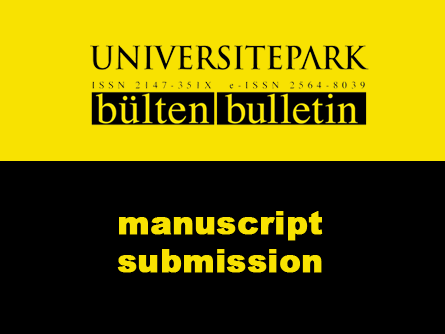Effect of Universal Rural Road Access Program (URRAP) on Rural Households’ Sociocultural Features: The Case of Jimma and Bunno Bedele Zones, South Western Ethiopia
pp. 44-62 | Published Online: September 2019 | DOI: 10.22521/unibulletin.2019.81.4
Hassen Nagesso Gafarso and Milkessa Edae Tufa
![]() Full text PDF |
3899 |
2582
Full text PDF |
3899 |
2582
Abstract
Ethiopia has been undertaking numerous development projects with the objective of taking the country to the middle-income bracket in the near future. The Universal Rural Road Access Program (URRAP) road in Jimma and Bunno Bedele zones is among such projects. Though this project is intended to bring about significant positive change, there are unintended consequences on sociocultural elements of rural households. Accordingly, this study investigated the impact of URRAP road on the sociocultural transformation of rural households. A household survey for randomly selected household heads and in-depth interview, Focus Group Discussion (FGD), and observation for purposively selected samples were employed in the study. Data were then analyzed quantitatively by using SPSS statistical data software and qualitatively through thematic method. The findings of the study show that URRAP road has had both positive and negative impacts on sociocultural elements such as family organization, social interaction, education, health, and both material and non-material cultural elements of rural households. Finally, URRAP road is experiencing problems, and is in need of extensive and frequent supervision and monitoring, as well as inclusive, interdisciplinary and sound strategies and policies by responsible bodies at all levels and contexts.
Keywords: URRAP, social aspects, cultural elements, rural households
ReferencesAlkire, S., Chatterjee, M., Conconi, A., Seth, S., & Vaz, A. (2014). Poverty in Rural and Urban Areas Direct comparisons using the global MPI 2014. Oxford Poverty & Human Development Initiative (OPHI). Oxford, UK: University of Oxford.
Allport, R. J., & Anderson, R. J. (2011). Managing Strategic Risk: The Worldwide Experience of Metros. Proceedings of the Institution of Civil Engineers – Management Procurement and Law, 164(4), 173-180.
Arethun, T., & Bhatta, B. P. (2012). Contribution of Rural Roads to Access to- and Participation in Markets: Theory and Results from Northern Ethiopia. Journal of Transportation Technologies 2(1), 165-174.
Bogale, B. D. (2016). Socioeconomic Impacts Of Road Development In Ethiopia: Case Studies Of Gendewuha - Gelago, Mile –Weldiya And Ginchi - Kachisi Roads. Doctoral dissertation. University of South Africa. Pretoria, South Africa.
Bryman, A. (1998). Social Research Methods (2nd ed.). Oxford: Oxford University Press.
Central Statistical Authority. (2015). Section B- population. Ethiopia: Addis Ababa.
Cohen, L., Manion, L., & Morrison, K. (2000). Research Methods in Education (5th ed.). London: Routledge Falmer.
Colton, D., & Covert, R. (2007). Designing and Constructing Instruments for Social Research and Evaluation. USA: John Wiley and Sons.
Corbetta, P. (2003). Social Research: Theory, Methods, and Techniques. London: SAGE Publications.
Creswell, J. W., & Plano Clark, V. L. (2011). Designing and Conducting Mixed Methods Research (2nd ed.). SAGE Publications.
Desai, V., & Potter, R. B. (2008). The Companion to Development Studies. London: Hodder Education.
Emmenegger, R. (2012). The Roads of Decentralization: The History of Rural Road Construction in Ethiopia. NCCR North-South Dialogue, 39. National Centre of Competence in Research.
Escobal, J. (2001). The Benefits of Roads in Rural Peru: A Transaction Costs Approach. Lima, Peru: GRADE.
Ethiopian Roads Authority. (2011). Assessment of 14 Years Performance Road Sector Development Program. Ethiopia, Addis Ababa.
Ethiopian Roads Authority. (2012). Universal Rural Road Access Program. Ethiopia, Addis Ababa.
Fernando, P., & Porter, G. (2002). Balancing the Load: Women, Gender and Transport. London/New York: Zed Books
Hirschmann, A. (1958). Strategy of Economic Development. New Haven, Cn: Yale University Press.
Marvasti, A. (2002). Qualitative Research in Sociology: An Introduction. London: SAGE Publications.
Morgan, D. (2014). Pragmatism as a Paradigm for Social Research. Qualitative inquiry 20(8), 1045-1053.
Norman, K. (2013). Social Dimensions of Transport – a resource for Social Impact Appraisals. London, UK: Department for International Development.
Poole, E., Toohey, C., & Harris, P. (2014). Public Infrastructure: A Framework for Decision-making. In A. Heath & M. Read (Eds.), Proceedings of a Conference on Financial Flows Infrastructure Financing (pp. 97-135). Sydney, Australia: Reserve Bank of Australia.
Rodrigue, J., Comtois, C., & Slack, B. (2014). The geography of transport systems (2nd ed.). Routledge.
Shiferaw, A., Söderbom, M., Siba, E., & Alemu, G. (2015). Road Infrastructure and Enterprise Dynamics in Ethiopia. The Journal of Development Studies, 51(11), 1541-1558.
Tegebu, F. N., & Seid, E. H. (2016). Quantifying the road influence zone on socio-economic development in rural Tigray, Ethiopia. African Development Review, 29(4), 601-614.
Terefe, L. A. (2012). Impact of Road on Rural Poverty: Evidence Form Fifteen Rural Villages in Ethiopia. Master’s thesis. International Institute of Social Studies. The Hague, The Netherlands.
Willis, K. (2013). Theories and Practices of Development. New York: Routledge.
Wondemu, K., & Weiss, J. (2012). Rural Roads and Development: Evidence from Ethiopia. European Journal of Transport and Infrastructure Research 12(4), 417-439.
Yamane, T. (1967). Statistics: An Introductory Analysis (2nd ed.). New York: Harper and Rao.
UNIBULLETIN News!
► New issue coming soon! (Volume 13 Issue 1, 2024)
► Call for Papers
UNIBULLETIN is calling for submissions. Authors are invited to submit papers from the all fields of the Education (General) and Social Sciences (General) in the international context. All submissions should be presented only in English.
